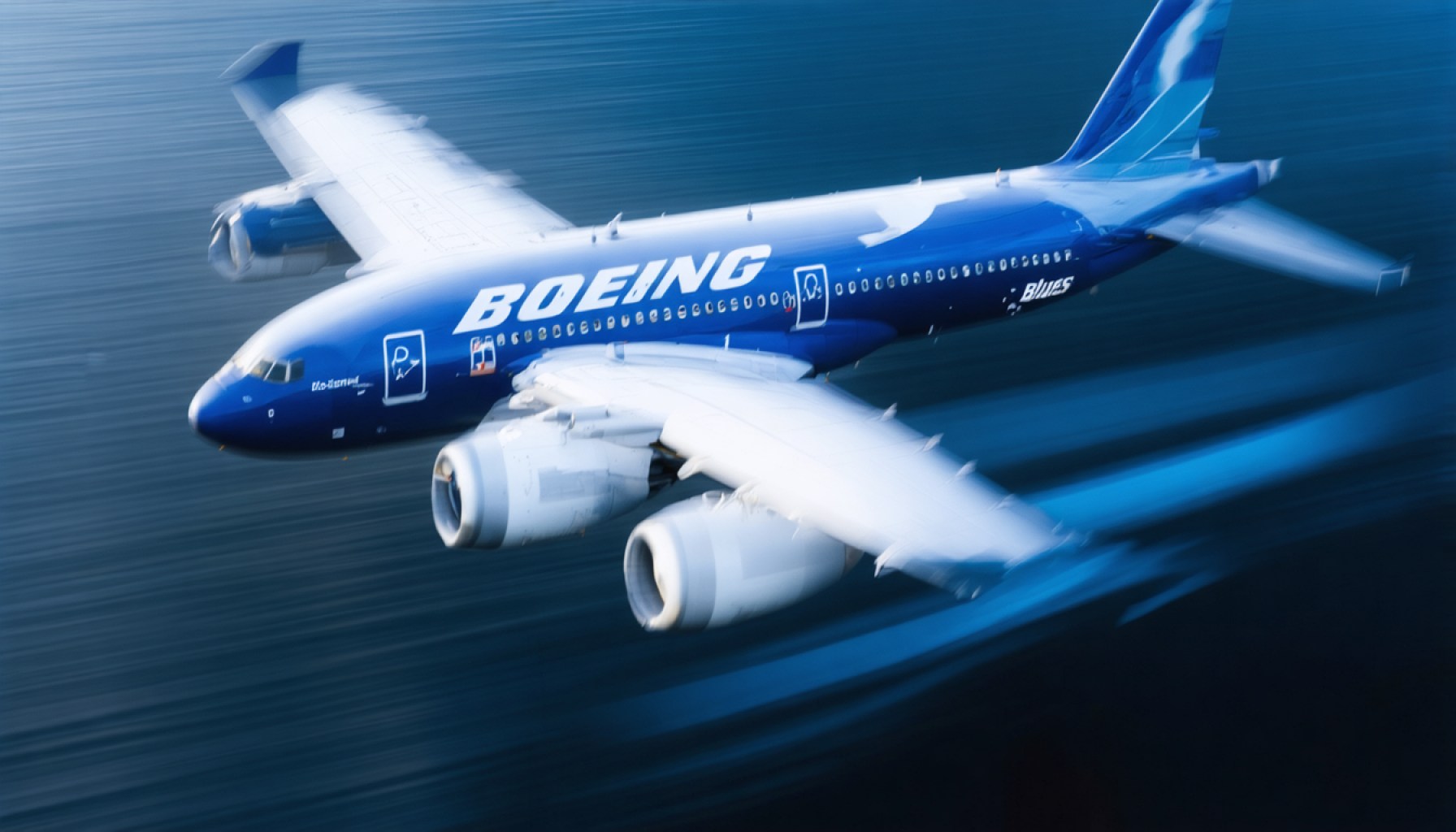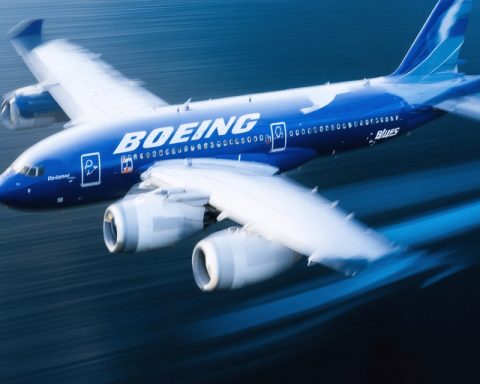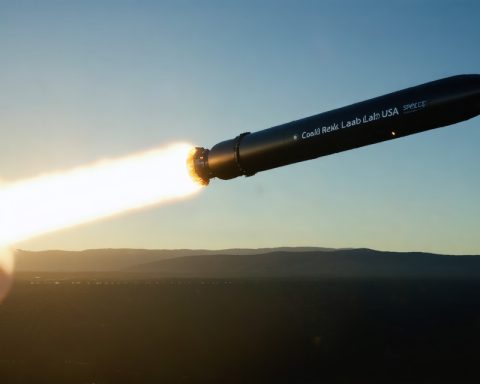- Boeing faces mixed outlooks, with potential Air Force One delays until 2029 causing concern.
- Boeing Defense, Space & Security continues to struggle with fixed-price challenges and cost overruns.
- Emirates’ cautious stance on Boeing 777X deliveries hints at possible delays until 2027.
- Possible 777X project penalties could impact Boeing’s financial health and fleet management plans.
- Optimism surrounds the Boeing 737 MAX, with plans to boost production offering financial hope.
- Safran’s leadership remains confident in the 737 MAX as a potential boon for Boeing’s future.
- Amid challenges, the 737 MAX revival is key to stabilizing Boeing’s financial trajectory.
- The balance of Boeing’s future hinges on navigating between innovation and reliability.
Boeing, the aerospace titan, finds itself caught in a whirlwind of mixed expectations, casting shadows and rays of hope for investors worldwide. Rumors whisper that the iconic Air Force One fleet might not grace the skies until 2029, suffering yet another setback in a project that has already dragged into turmoil. Such delays underscore the persistent challenges within Boeing Defense, Space & Security, where fixed-price hurdles have historically siphoned billions.
Meanwhile, a key Boeing partner sends cautious signals across the desert sands of Dubai. Emirates, a linchpin in the success of the monumental Boeing 777X, tempers its expectations, murmuring about deliveries that might not alight before 2027. These whispers cut deep into Boeing’s ambitious dreams, suggesting future penalties and fleet planning headaches that could affect cash flows and balance sheets alike.
Yet, amidst these brewing storms, a glimmer of optimism emerges. The workhorse 737 MAX is poised for a revival, with plans ramping up to transform production rates in the coming years. Safran’s leadership conveys a reassuring message of confidence—a potential turning point that offers Boeing a chance to navigate back to calmer financial waters.
In the grand scheme, Air Force One delays might be a mere blip on Boeing’s radar. However, the ripple effects of the 777X saga could resonate loudly if unaddressed. Investors cling to the hope of the 737 MAX’s resurgence, banking on its production prowess to chart Boeing’s course. As the aerospace behemoth weathers these gales, stakeholders await the dawn of a renewed ascent. The path ahead teeters on the edge of innovation and reliability, where fortune favors the bold and prepared.
Boeing’s Turbulence and Triumphs: What’s Next for Aerospace Investors?
How-To Steps & Life Hacks
How to Invest in Aerospace Stocks Like Boeing:
1. Research Thoroughly: Analyze Boeing’s financial reports, investor presentations, and industry forecasts. Websites like Boeing provide a wealth of information.
2. Understand Market Trends: Focus on commercial aviation trends, military contracts, and technological advancements in aerospace.
3. Diversify Your Portfolio: Investing solely in Boeing can be risky. Consider other aerospace companies to balance your investment.
4. Stay Updated: Follow industry news and Boeing announcements, as stock prices can be volatile based on new developments.
Real-World Use Cases
Boeing 737 MAX’s Return to Service:
– Global Market Impact: The resumption of 737 MAX deliveries boosts airline capacities globally, especially in regions with growing air travel demand like Asia-Pacific.
– Environmental Benefits: The 737 MAX is more fuel-efficient, aligning with airlines’ sustainability goals, and reducing operational costs.
Market Forecasts & Industry Trends
Aerospace Industry Outlook:
– Commercial Aircraft Demand: The global market for commercial aircraft is expected to grow, driven by rising passenger traffic and the need for more fuel-efficient fleets.
– Defense Spending: With increasing geopolitical tensions, countries are likely to boost defense budgets, benefiting Boeing’s military contracts.
Reviews & Comparisons
Boeing 777X vs. Airbus A350:
– Performance and Range: The 777X boasts a longer range, but the A350 offers similar capacity with slightly lower operating costs.
– Technology: Both aircraft feature next-gen technologies, though the 777X’s folding wingtips are an innovative standout.
– Customer Base: Emirates’ cautious approach to the 777X reflects some uncertainty; however, it remains a preferred choice for long-haul travel.
Controversies & Limitations
Challenges Facing Boeing:
– Project Delays: The Air Force One and 777X projects face significant delays, leading to potential financial penalties.
– Fixed-Price Contract Risks: These contracts pose challenges as cost overruns cannot be passed to customers, impacting Boeing’s profitability.
Features, Specs & Pricing
Boeing 737 MAX Key Specifications:
– Capacity: Accommodates 138-220 passengers based on variant.
– Range: Approximately 3,850 to 3,930 nautical miles.
– Pricing: The list price ranges from $100 million to $135 million per aircraft, though actual sale prices typically involve substantial discounts.
Security & Sustainability
Commitment to Environmental Stewardship:
– Sustainable Aviation Fuels (SAF): Boeing is investing in SAF research and collaboration, aiming to reduce carbon footprints significantly.
– Innovative Design: Newer models incorporate advanced aerodynamics and materials for improved fuel efficiency.
Insights & Predictions
Long-Term Strategic Moves:
– Innovation Focus: Boeing is likely to invest in electric and unmanned aerial vehicles as future growth areas.
– Asian Market Expansion: With surging demand for air travel in Asia, Boeing may increase regional partnerships and sales efforts.
Tutorials & Compatibility
Adapting to Boeing Fleet Operations:
– Training Pilots: Airlines are investing in simulator training for 737 MAX pilots to ensure safety and operational efficiency.
– Maintenance Standards: Airlines must upgrade their maintenance facilities to accommodate Boeing’s advanced aircraft technologies.
Pros & Cons Overview
Boeing’s Current Position:
– Pros: Industry leader with a strong portfolio, significant military contracts, and potential resurgence of the 737 MAX.
– Cons: Facing financial strain from project delays, competitive pressure from Airbus, and market skepticism.
Actionable Recommendations
For Investors:
– Focus on Long-Term Growth: Despite short-term hurdles, Boeing’s long-term growth potential remains robust. Consider holding for future gains.
– Monitor Regulatory Developments: Be aware of any changes in aviation regulations or safety guidelines that could impact Boeing.
For Airlines:
– Explore New Fleet Options: Diversify fleets with a mix of Boeing and competitor aircraft to hedge against production delays.
– Enhance Sustainability: Invest in fuel-efficient models like the 737 MAX and explore SAF options to reduce your environmental impact.









